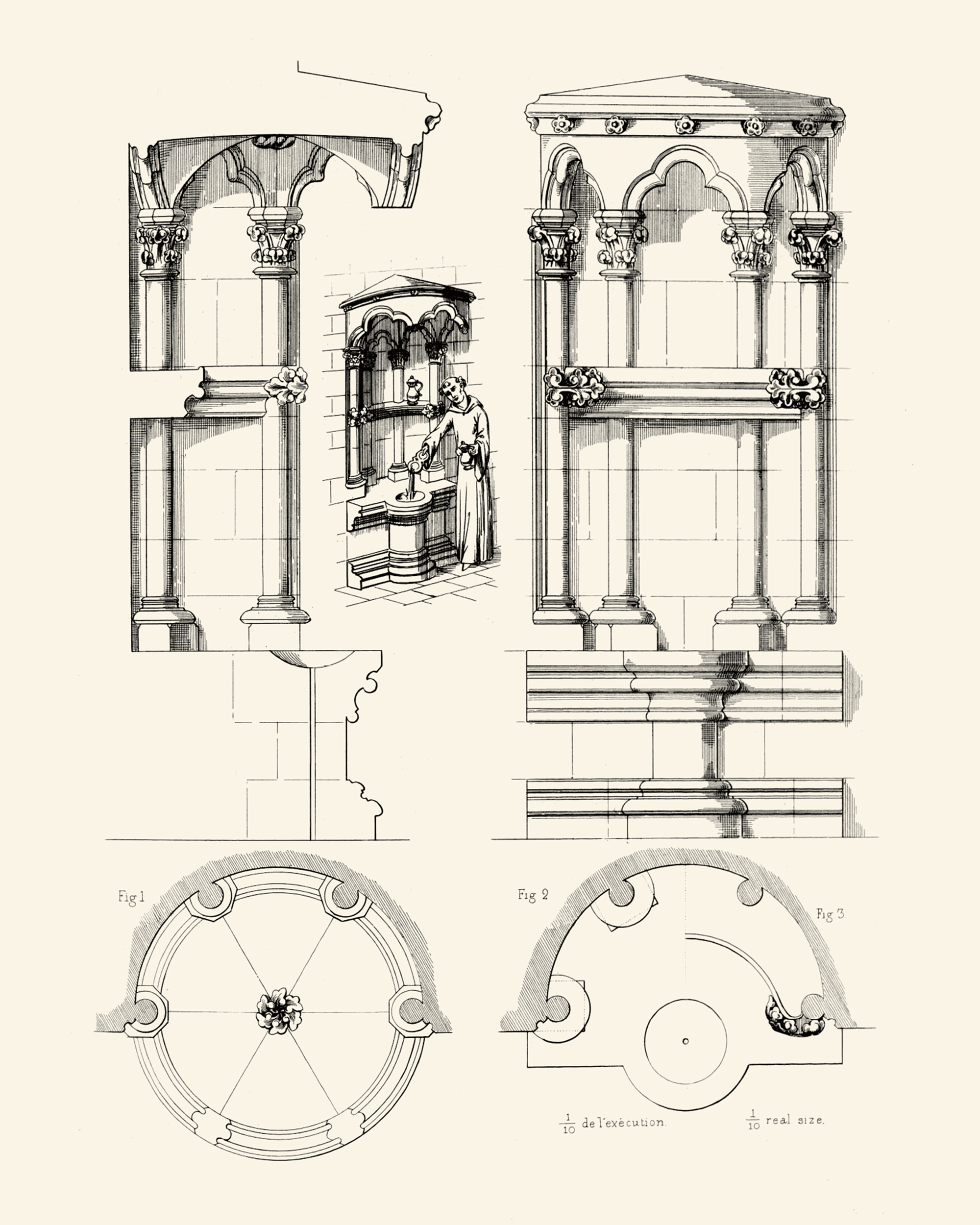Drain Pipes, Dream Pipes, Pipe Dreams
Ecclesiastical plumbing
Yara Flores
The good king Oswald of Northumbria fell to the forces of the pagan Penda of Mercia on the 5th of August 642, not far from the Welsh border. Dismembered, his bits were skewered on pikes and left on the battlefield for a full year—an expression of pagan distaste for Christianizing Bernicians. A unified England would have to wait. But Oswald’s faithful followers eventually retrieved his remains, and bore them to the monastery at Bardney, where, as Oswald’s chronicler tells it, the monks carefully washed his bones and
ipsam aquam in qua laverunt ossa in angulo sacrarii fuderunt.
[this water, in which they had washed the bones, they poured out in a corner of the presbytery.]
The line amounts to little more than a mortuarial postscript on the convert son of Aethelfrith the Ravager, but it counts as a major find for historians of ecclesiastical architecture. The brothers poured this solemn dishwater in a corner of the presbytery? But this can only mean one thing: that there was, in the presbytery, a drain. A drain? In a church? Interior plumbing in the Dark Ages?

We have here come upon a small hole that opens onto a large story, since this brief aside in the writings of the Venerable Bede appears to be the earliest existing reference to that most mysterious detail of spiritual architecture: the piscina—the sacred sink found in every Catholic church in the world.[1]
Former altar boys may recall this priestly appliance, now usually installed in the vesting rooms where the elements of the mass are stored, prepared, and cleaned after use. Often set apart under an ornate lid and sealed under lock and key, the piscina has the air of a tabernacle but the appearance of a hooded washbasin. Indeed, its cover opened, the modern piscina tends to look like a very ordinary little sink. The deep difference lies not in its exposed hardware (an enamel basin, common chrome or brass fittings, etc.) but rather in its hidden plumbing, since the drainpipe of a piscina, rather than running into the sewer system, instead passes in pristine segregation down through the floor and foundation of the church and there vents into a small, sepulchral cave sunk in consecrated ground. The piscina is a sink that leads to a grave. What we have here is less a drainpipe than a burial chute.
• • •
The evolution of this distinctive bit of ecclesiastical furniture traces one of the great debates in the history of (ir)rationality: the vexed matter of the “real presence” of Christ in the Eucharist. Theological thinkers have had, for several thousand years, a fiendish time coming to consensus on the precise meaning of Jesus of Nazareth’s recorded departures from the standard text of the Passover seder he celebrated one fateful night in Jerusalem in the sixteenth or nineteenth year of the rule of Tiberius. At this gathering, the popular young rabbi apparently said, while holding the bread, and later the wine, “This is my body,” and “This is my blood,” which utterances—taken in the context of his general preaching and subsequent death—some construed, polemically, as a suggestive crossing of the Jewish traditions of the paschal lamb (to be sacrificed) and the ancient Hebrew messianic prophesies (for a king). Efforts to sort out all the implications eventually gave rise to some major deflections from Jewish orthodoxy, together later known as Christianity.